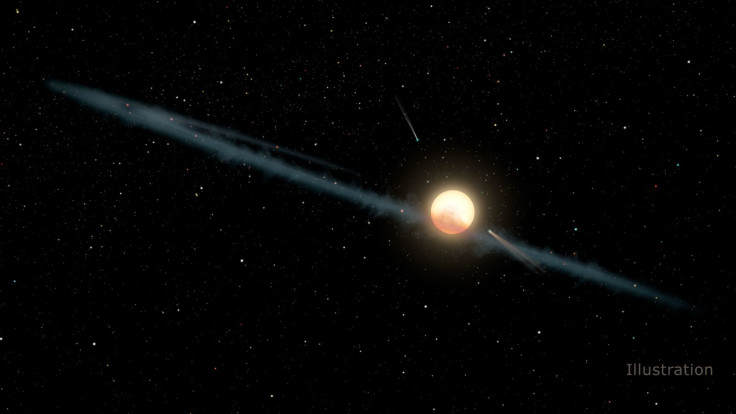Mysterious ‘Alien Megastructure’ Star Fluctuates, Goes Extremely Dark Once Again

The mysterious Tabby’s star, aka ‘Alien megastructure’ star, that sits over a thousand light years away from our planet and shows weird, inexplicable dimming patterns is once again fluctuating sporadically.
On March 26, the celestial object, officially dubbed KIC 8462852, came back into action and witnessed a major dimming episode, one where its light dipped by about 5-10%, ScienceAlert reported.
Tabetha Boyajian, the Louisiana State University astrophysicist who first discovered the celestial object, caught the episode and confirmed it was one of the deepest drops in its brightness since Nasa’s 2011 Kepler observation – the last record dip.
The space telescope witnessed a whopping 22% decrease in the light emitted by Tabby’s star during that observation. Since then, there have been several dimming episodes, but none of them proved as dramatic as the one recorded just recently.
The whole dimming event started off with a dip of 4% on March 16, the deepest at that time. It lasted for a few days and then everything turned back to normal. However, just when things seemed quiet for a while, the star started fluctuating again, this time with much less brightness.
“Today we have some very big news - data taken at TFN [The Flux News] last night show the flux is down 5%,” Boyajian said in a recent blog post. “This drop has now been confirmed by AAVSO (American Association of Variable Star Observers) observer John Hall. Looks like we beat the record set just last week on the deepest dip observed since Kepler!”
Typically, stellar dimming results from planetary orbit. When a planet, an Earth-sized or a bigger body, crosses the path between the star and Earth, the light emitted from the star is blocked and its light drops by about 1% or less.
But that’s just a regular activity. In the case of Tabby’s star, dimming is not only irregular but its intensity has also been inconsistent. On some occasions, the brightness falls sporadically, but observational data also suggested that there have been periods of extended brightness in the star’s past.
Astronomers have posited several propositions to justify the weird behavior. Some say an alien megastructure blocks the light, an immensely popular theory, which was contradicted last month, while others think a swarm of comets, a giant ringed planet, or a cloud of dust could be responsible for the weird dimming.
The exact reason still remains unknown but the best possible theory explaining the stellar activity is that of dust. Scientists will have to use more observations like this to understand if it's really a cloud big enough to block as much as 22% light of a star or something else.
© Copyright IBTimes 2024. All rights reserved.




















